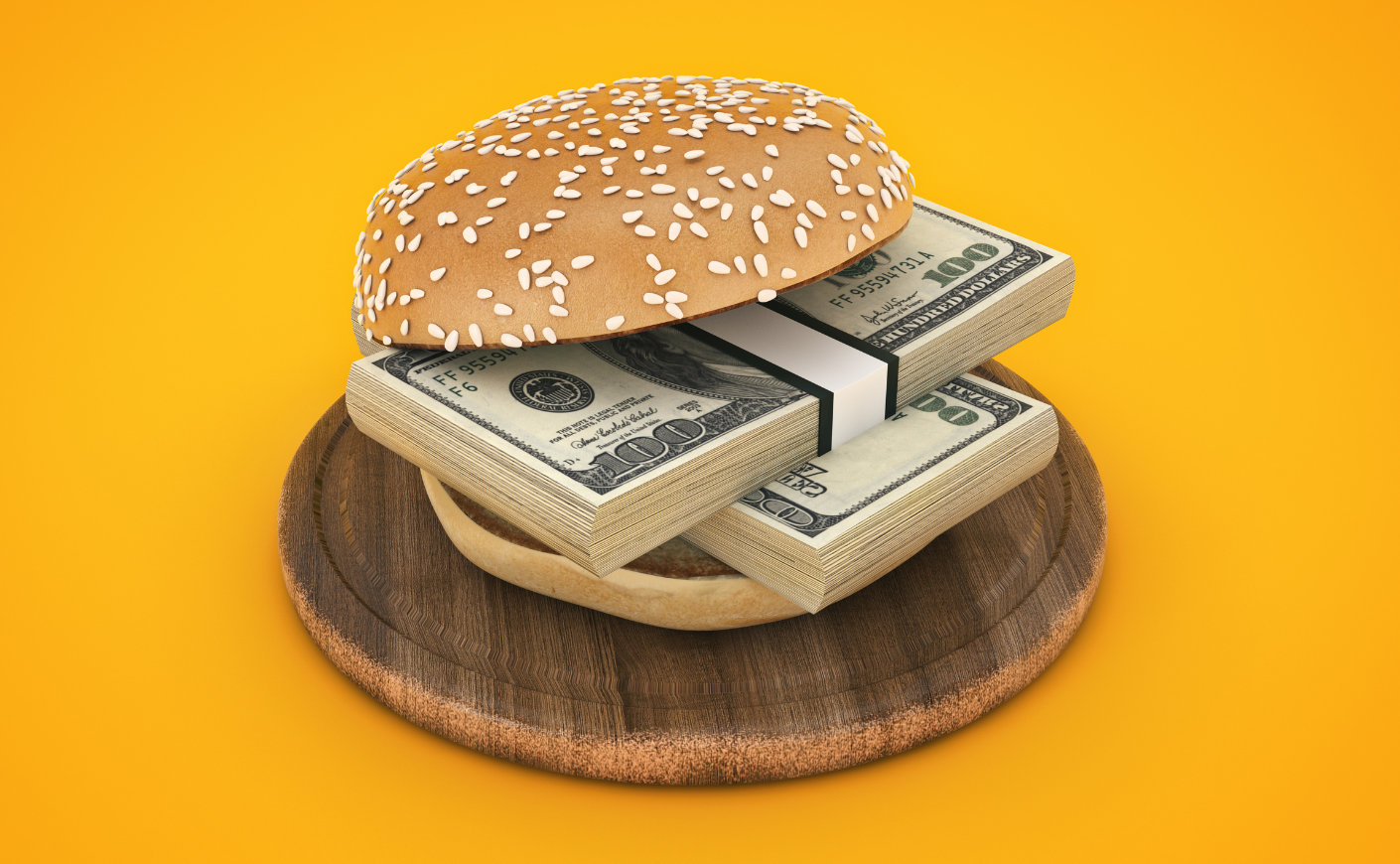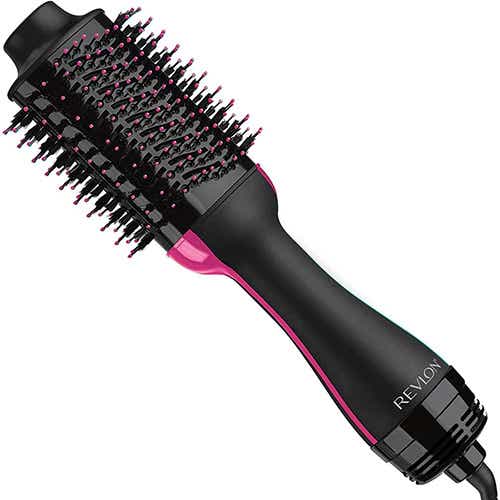How do you deal with that insufferable iPad?
Once upon a time, we knew exactly when we were expected to tip. After a sit-down meal served by waiters who fulfilled requests, delivered silverware, and provided that extra dish of our favorite condiment, we’d pad the bill with some cash to show our appreciation for the hospitality.
These days, giving a gratuity has become the Wild, Wild West of just about every commercial interaction. Whether you’re picking up takeout, grabbing a to-go coffee, getting gas, or even getting pants hemmed at the tailor, it’s more and more common to be prompted by an iPad to add a tip before your signature. (The phenomenon’s being called “tipflation.”)
“The pandemic created some of this extra, over-the-top tipping as we were grateful to have people in the hospitality and service industries actually working,” says Libby B., a reader of our newsletter Wake-Up Call. “But the pandemic is over, and it feels as though tipping is still expected on everything. It’s become an extra tax.”
Should we really be sweetening the pot on every transaction? And will we be judged if we don’t? To better understand how others are navigating this slippery slope, we turned to our newsletter subscribers (always an opinionated group!) to learn how they’re operating in the current climate.
Uncertainty about tipping is often based on whether customers should be subsidizing a worker’s wages.
Adrienne H. puts it simply: “If you abolish tipping, then minimum wage should be increased.”
“Tipping is meant to reward service, but it’s been an excuse by those in the service, hospitality, and food and beverage industries to pay a pittance of a subpar minimum wage,” adds Judith V. — and she has a point. While the federal minimum wage is currently $7.25 per hour (hardly enough to make ends meet, but that’s another story), tipped employees can legally be paid as little as $2.13 per hour.
While waiters at sit-down restaurants have dealt with this arrangement for years, it’s creeping into other places, too. Lorraine D. wrote in to tell us about a friend who’s an executive at a recognizable quick-service coffee franchise. While this exec “gets paid a massive salary, lives in a gorgeous house, and takes amazing vacations,” entry-level employees who work the register are told they can expect $6/hour on top of their salary in the way of tips — but that puts the onus on customers to give that person a living wage. “This is only a small part of our terrible system that keeps a lot of fully employed people poor,” Lorraine says.
Laura L. wrote in from Boulder, Colo., where she’s seeing more and more restaurants adding a mandatory “living wage fee” that boosts a bill by 20 percent. “And then we are supposed to also tip on top of that,” she says. “We have friends who have owned restaurants and all agree the restaurant should be using a pay structure that sets up their employees to earn a living wage. It is not a burden to put on the customer, but a responsibility of the restaurant.”
And even if you do tip generously, there’s still the uncertainty of who, exactly, is benefitting from that. “It only rewards the restaurant employee who has face-to-face contact with the customer,” says Robert K. “Why are the hostess, the cook, and the busboy also not tipped? I would prefer the restaurant charge more for the meal and pay their employees appropriately for their respective labors and forget about tips.”
Then there’s the complicated question of how much effort should merit a tip.
“I have tipping fatigue,” says Emme E. “When the screen turns and I’m confronted with tipping 15 percent, 20 percent, or ‘other,’ I’ve started choosing ‘skip’ at the bottom of the screen. This is for situations when the interaction is basically that of a cashier. I don’t tip the cashier at the grocery store or the dry cleaners or the person who checks me in at the doctor’s office, so why do I need to tip this person who is performing the same type of duties albeit at a food establishment?”
Patricia C. feels similarly: “When I go into Shake Shack and the people prepping my food are being paid minimum wage, I don’t tip — especially when I’m getting up to pick up my meal and pouring my own drink. Isn’t tipping for those going above and beyond to do something extra?”
For people who always like to tip “more than expected,” like Jaclyn B., the ease of adding a little extra to a quick transaction can even be seen as a welcome opportunity. “If I go into Starbucks or Panera, I like to tip. The people working behind the counter are actively working hard on my order — they greet me, input my order into the register, and they often make the order, too.”
But what about someone who’s simply handing over a food item that they neither prepared nor spent much time packaging? “Now you go to buy a cookie and you’re given an option to tip the person who puts the cookie in a bag and hands it to you,” says Donna M. “Isn’t the cost of that person’s service built into the cost of the expensive cookie? That’s why Crumbl cookies are about $5 apiece.”
What about tipping on takeout?
Many readers agreed that they’re open to tipping before taking their order home, depending on the effort involved. “It depends on how much the attending worker has to do,” says Ryder W. “For a cup of coffee, I’ll leave my change if there is some. For larger counter orders, I’ll tip 10 percent. But for an extra big ice cream cone at our local creamery, I always leave a few bucks. College students work there for the summer!”
Joey S. approaches his tipping decisions with a like-minded strategy: “If I’m picking up and I see that they’ve taken a little extra care with bagging my order (salad bagged separately from a hot entree, containers placed so they won’t turn over in my car, etc.), I’ll tip a buck or two for the consideration. If there’s minimal effort required to get the order ready for pickup (like putting pizza in a box), then I don’t tip.”
But even pizza can get some diners worked up. Lisbeth W. tells us that when she recently got a takeout pie with her son, he asked how much she wanted to tip while putting in an online order. “I said, ‘Nothing,’ and he said, ‘You have to do 25 percent. They are making your food — do you want it to be good or bad?’ I felt like I was being held hostage.”
Deciding how much to tip is one thing. But many readers find themselves agonizing over the transaction experience.
“I tip on everything these days where I am prompted, and the prevalence of iPads has definitely increased the frequency of my tipping,” says Kathryn D. “I try to be mindful of the percentage after accidentally tipping 30 percent a few times. It leaves a bad taste in my mouth when restaurants do things like have the largest tipping amount be the default amount and force you to change it.”
Making a quick decision about which button to push on the iPad is one concern, but there’s also the problem of being watched while you do it. “It’s embarrassing for both parties when they turn that iPad,” says Jay S. “It makes me less likely to return to that establishment.”
Celine P. also feels anxious about being observed while deciding how much to leave. “I believe the standard should be that they bring it to you and leave it with you, rather than standing over you while you do the transaction. I feel this newfound pressure of having to tip even over 20 percent while they’re watching me,” she says.
And as many of our readers pointed out, the dreaded iPad button-pushing gets especially complicated when you’re paying for a combination of services you would tip for and products you wouldn’t. Debbie D. recently visited her aesthetician, who recommended a serum after her monthly facial. “At the iPad register, she included the $50 serum in the total transaction, and I was disappointed she didn’t ring up the serum separately,” Debbie says. “She knows I always tip 20 percent for her services, but now I’m also paying 20 percent more for the product.”
What about services that aren’t food or beverage?
“I’m not averse to tipping, but why do we only tip servers in food establishments?” asks Carol C. “I was an experienced seamstress my whole life, working in a fabric store for many of those years and giving valuable help to people who had no clue about sewing. It was a minimum wage job, I was on my feet all day — just like a server — dealing with cranky people and carrying bolts of fabric that weighed a lot more than a plate or two of food. And there were no tips at the end of the day.”
That wouldn’t sit well with Sherri S., who was shocked when her husband was recently prompted to tip after being fitted for a suit. “I do not agree that we are now asking to tip someone to spend 10 minutes to measure you for clothing. That is over the top,” she says.
But plenty of our readers report that they’re happy to pay a little extra for a service they value. “In Oregon, we have gas station attendants, and we tip them $5, very often to their surprise and a big smile, for pumping our gas. It’s one way of sharing our appreciation for thankless jobs and leveling the playing field a wee bit,” says Peg M.
Laura W. agrees: “Even if I paid a hefty delivery fee to have a new mattress delivered, I’ll give $20 extra to each of the poor souls who had to drag it up my narrow steps and wait while I vacuum, then take my old, saggy mattress and box spring back down those narrow steps.”
Nicole A. has an interesting perspective on this, as a masseuse who runs her own business. She doesn’t expect tips, but that’s because she sets her own prices and works out of her home. “I can understand the confusion around tipping a self-employed service provider, and my rule of thumb is that if they are incurring more overhead to rent or lease a space, then I will tip for that service,” she says.
Is there really any alternative to these tense tipping moments?
“I’ve spent time thinking about gratuity and how we might move away from it as a culture. I don’t think we can,” says Teri P. “There was a time when people were paid a living wage and a tip was a nice bonus. Now, it seems like many workers depend on tips to make ends meet. I don’t know how you put the proverbial toothpaste back in the tube.”
Several readers referenced their experiences internationally, where servers are paid more by their employers, and tipping isn’t expected. “How about we pay the service industry a solid base and get rid of tipping? It works in Europe, and waiters can work for many years with a livable wage, meaning no more endless training new employees for restaurants. It’s a win-win,” says Denise C.
“On a recent trip to Spain, my family was impressed with the restaurant and service industry there,” writes Aimee J. “No tipping! And no weird cents, either — everything is rounded to an even number. You pay exactly what the price tag or menu says. It took the stress out of dining out.”
It’s never a bad idea to do something unique based on your personal situation.
Jeannette W. says she found a creative solution upon realizing she and her partner are eating less as they get older: “We have very small appetites now, and we always share one meal. But when the bill comes, I tip 40 percent. That’s because I know tips are part of their salary, and they do wait on us hand and foot by bringing extra water or more napkins. I feel it’s wrong to cheat them because we have small appetites.”
Or you could always show your appreciation with something other than cash, like Hanna H.: “I tip for good and friendly service — and if it’s exceptional, then I really reward the effort. I love to bake, and I enjoy spreading my sweet goodies, muffins, cupcakes, cookies, and kuchen, whether it’s for my doctors and nurses, my local library and post office helpers, delivery staff, and whoever helps make my life better.”












